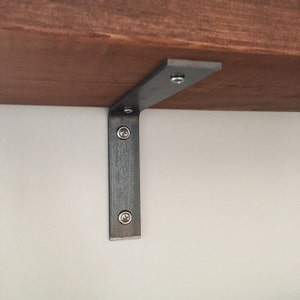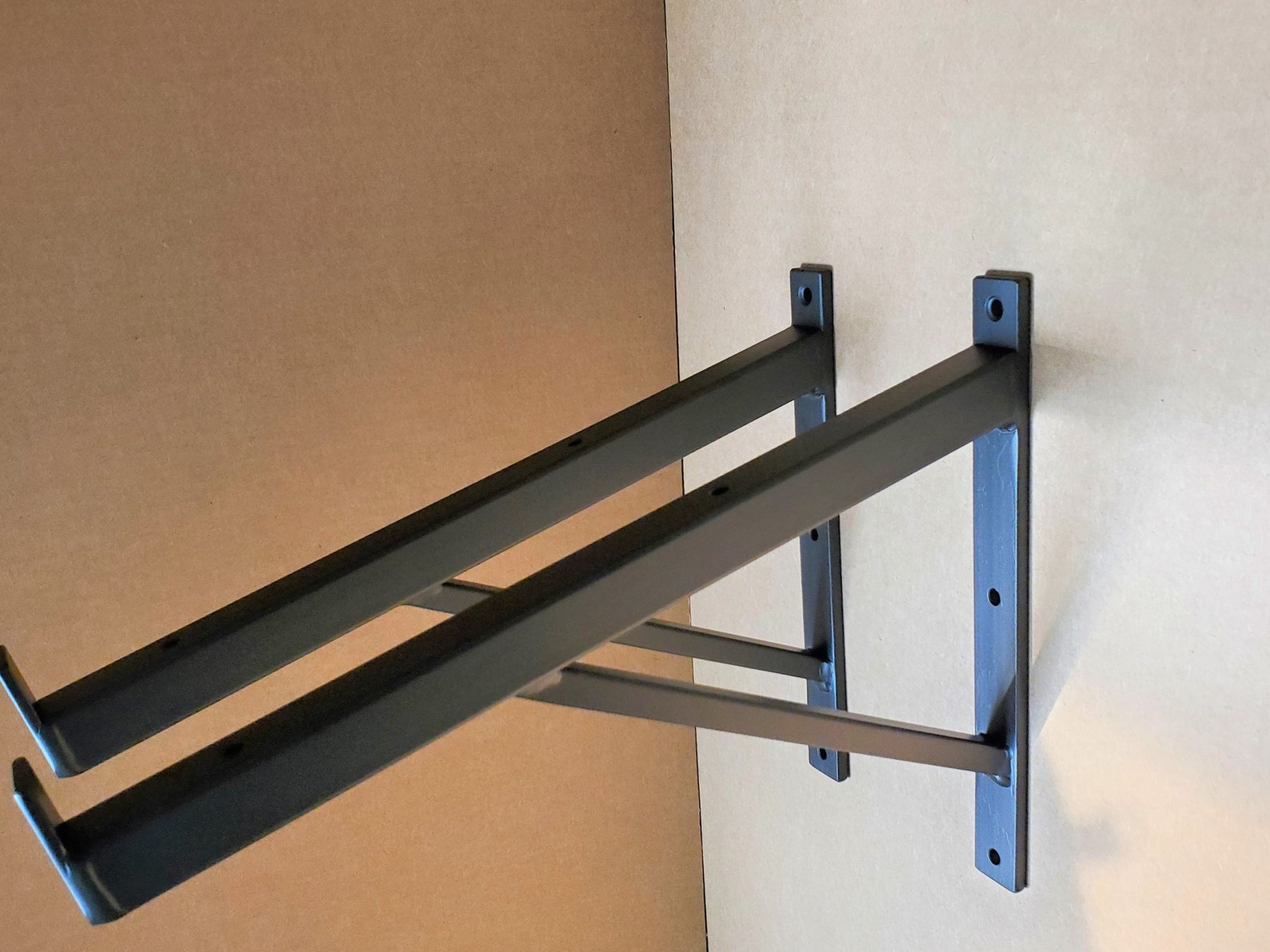
So my hope is that someone can suggest a simpler method, but if the best path is simply to improve my math skills, then it is what it is and I will accept thank you in advance :). On 1), I know there are often many ways to accomplish the same thing. I do have a planer, so perhaps if I used it (or even my table saw) to make the wood more square this would be less of a problem. I think one issue is that I have trouble holding the pieces straight when cutting because 2x4's are curved around the edges. Hopefully when I get my miter slide (or whatever it's called) that will help with 2).
#Angled wood shelf brackets how to#

I'm not necessarily looking for perfection, but I would like to at least get the bubble in the center section on the level. Sadly, my new bandsaw saw was missing the miter slide (I've emailed the manufacturer and hope to receive it soon), so I had to make the cuts freehand.Īs you can see, the bubble on the level is all the way to the right. Using the right angle triangle block, I positioned the cross brace by hand such that it was going into both the other 2x4's equally and then traced around it in pencil. I had the 9" (on the long side) cross brace from my previous attempt, and I had a right angle triangle block that was conveniently the perfect size to help me align it such that it would go into the other 2x4's about half way. After applying a corner clamp, it became clear that it wasn't a perfect 45 degrees, but it was pretty close. Use my miter saw to angle the ends to 45 degrees. I liked using the bandsaw for this a lot better, but I don't know how to properly measure my cuts. The first time I used a table saw to cut the slots, and this time I used a band saw. This creates a pocket for the screw-head to fit in so that it is flush with the wood.Pictured below is my second attempt at this. Then use a large drill bit to notch out a larger area just at the very beginning of each hole. Whenever you predrill holes for screws, they should be just slightly smaller than the screws you will be using. Start by predrilling holes through your shelf brackets where the screws will go. So instead I used plan B to hang these shelves – sturdy anchors. If I had hung the shelves in my bathroom using studs, they would have looked completely random instead of being centered over the toilet. When you are ready to hang your shelves, if at all possible, it’s a good idea to screw the brackets directly into studs.īut sometimes that just isn’t possible. Two-inch thick boards work really well, especially for longer shelves, but one inch boards can also work. Whatever wood you use, just make sure to choose straight boards that are thick enough to be sturdy. You can also use common board or even buy wood that is specifically marketed as ‘shelf board’ and have it cut to size in the store. I had some great reclaimed wood that I cut to size for my open shelving. You can use pretty much any sturdy wood for your actual shelves.

To make the final side of the shelf brackets, use a miter saw to cut the 1″x2″ board to 5.5″ long, with a 45-degree angle cut along each side to form a trapezoid as shown in the photo below. Cut a second piece to 6″ (or 1.5″ shorter than the first piece). To make the shelf brackets, cut a 2″ x 2″ board to 7.5″ (or whatever length you have chosen for your supports). If you want to use these for longer shelves, it’s a good idea to add an additional bracket every 3 or 4 feet to prevent bowing.

I have used these same shelf brackets for both 36″ wide shelves and 26″ shelves and they worked great for both. Just make sure your brackets are at least 1/2″ shorter than your shelves – otherwise they will stick out. If you want to hang deeper shelves, you can adjust your support measurements to be a bit bigger. My shelves are 8″ deep and these brackets are perfect. This size works well for most shelf sizes, but you can easily adapt these instructions for larger shelves.

The shelf brackets I made are 7.5″ tall and 7.5″ deep. How to Make DIY Shelf Brackets Dimensions These screws are ideal because they have a built-in anchor and are made specifically for hanging things like shelves. Paint or stain of your choice – I used white paint and dark walnut stain for the weathered white finish on my shelf brackets.2″ x 2″ furring strip – you can find these for super cheap at your local home improvement store.Reclaimed wood or a 2″ x 10″ common board – for your shelf boards.


 0 kommentar(er)
0 kommentar(er)
